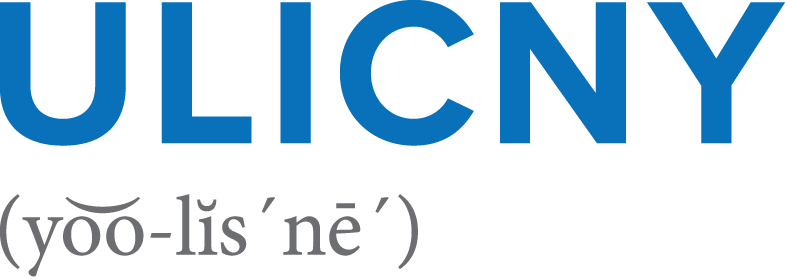In my recent, in-depth interviews with Registered Investment Advisors (RIAs), I was excited to see how open they were to mastering digital tools. Many are trying their hand at using social media, shooting videos, writing blogs, hosting webinars, creating podcasts, sending weekly email newsletters, and—of course, everyone’s quarantine favorite—connecting over Zoom.
When I shared my findings with our managing partner, Jeanie Ulicny, she agreed that the move to digital has already been seismic. She recently spoke to the head of strategy at one of the nation’s largest turnkey asset management platforms (TAMPs), who offered, “Advisors’ biggest concern right now, besides market volatility, is elevating their digital interaction with clients to meet the quality of their in-person interaction.”
This ability to meet investors’ expectations for real live human support, delivered remotely, is sometimes called “digital quotient” or “D.Q.” — and it’s the next evolutionary step beyond investing quotient (I.Q.) and emotional intelligence quotient (E.Q.).
The bottom line: Advisors have an unprecedented opportunity to apply new digital capabilities to serve investors now. It’s not too late to cement your role as a trusted partner to clients by learning new digital skills.

Going beyond screen sharing
Many of the RIAs I spoke with emphasized ways they now use digital tools to reassure clients about their finances.
Don G., an RIA in Washington state, for instance, described how he ran projections on a shared screen to address questions about cash flow for a client who’s retiring in June. He was able to show, in real time, that the client was still in a position to move on with the next phase of his life. “He won’t be buying a boat in June like he planned,” Don reports, “but he has enough cash to retire on time.”
Wade D., an RIA from Virginia, said that his team has been able to adapt to the crisis because they were up and running with the tools they needed before it even started.
“We have been using Microsoft Teams for about six months, and this situation was a perfect opportunity to get comfortable with it. The platform allows us to meet with clients and team members and share screens.” While doing that, he reports, he and his team “give clients a thorough review of where they are and how they are positioned to ride this out.”
Wade and his team are also using that same platform to collaborate on investor communications. “I can write a letter or article,” he explains, “and my team members can change a paragraph or personalize it for their individual client.”
Connecting through more digital touches
Now that they’re unable to meet face-to-face with investors, other RIAs I spoke with have introduced more frequent digital communications.
Dana R. in Seattle, developed a new weekly email newsletter to address the current situation with investors, including “quick hits on political, global, and market reactions.”
Mike M., an RIA in Pennsylvania, also reports that his team is now sending out a weekly email to clients, incorporating videos and articles from a variety of financial sources. The team has transitioned well into their remote environments, he says. “Thank goodness for snow days this past winter,” he adds. “They prepared us all to work in separate locations.”
He also says he’s using more frequent client communications to paint a picture of the current situation and the economic rebound he anticipates. “I tell them it’s like an old filament light bulb. You turn it on and it flickers a lot at first, but it warms up and, slowly, the glow fills the room.”
Hosting webinars to generate new business
In addition, more advisors are introducing communications aimed at helping investors build up their own digital literacy.
In this recent Horsesmouth article, Tony LaJeunesse describes how he is hosting weekly webinars both to help clients get more out of working remotely with their advisor and to offer cybersecurity tips for protecting their financial data. He’s also using webinars to generate new business.
“Toward the end of the webinar, I’ll explain that we are recording, and I invite them to please feel free to send the MP3 file to a friend or colleague or co-worker. Clients have been doing that. And that’s how we have been getting new clients.”
Getting social to attract next-gen wealth
Several RIAs I spoke with have taken advantage of physical distancing guidelines to fine-tune their digital presence. They view their extra time as an opportunity to work on their websites, blogs, and social media presence.
One such RIA is Pran T., who operates a practice in Massachusetts. He says he may now dive in and begin using social media and blogs. “We need to start, and then we can see how to support it,” he says, adding that younger members of his practice believe that social media is “where new clients are going to notice them.”
Yet in their day-to-day focus, Pran and his team members remain very hands-on. “We are taking it one call at a time, making sure each client hears a friendly voice,” he says.
Tips from advisors
- Stay connected. In addition to using a platform like Microsoft Team to keep colleagues and clients connected, you can also use online collaboration tools to work with your team on investor communications—using templates that help create consistency and efficiency.
- Broaden your scope. Expand the list of topics you present to clients in your communications. Consider these: How to use online tools to get the most from your advisor and Protecting your financial information online.
- Show your work. Host and record regular webinars on topics that are important to investors now. Encourage clients to share the recordings with others in their network.





